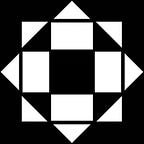Auguste Rodin’s controversial statue, known as L’Age d’airain / The Age of Bronze, had taken naturalistic realism to a skill-level rivalling the great sculptors of the classical era. It was intended as a poem in bronze capturing the moment of awakening to either joy or suffering, representing the state of mankind during the Bronze Age, as humans rose from their natural state and began on the journey to becoming ‘modern’. But, when first exhibited in Brussels in 1877, it polarised the critics of the time, with some lauding its anatomical accuracy and others dismissing it as a portrayal of a ‘low type’ lacking any attributes of the ‘heroic’ expected in statuary.
A few skeptics were dubious of the artist’s skills and accused him of merely taking a cast of the model. In one respect, this was a testament to his prowess but, if not contested, would have excluded him from showing the work at the Paris Salon. So, the sculptor organised a committee of expert sculptors and technicians to confirm that it had indeed been carved by hand prior to casting in bronze and provided photographs of the sitter, a young Belgian soldier named Auguste Ney, for detailed comparison. After this…
